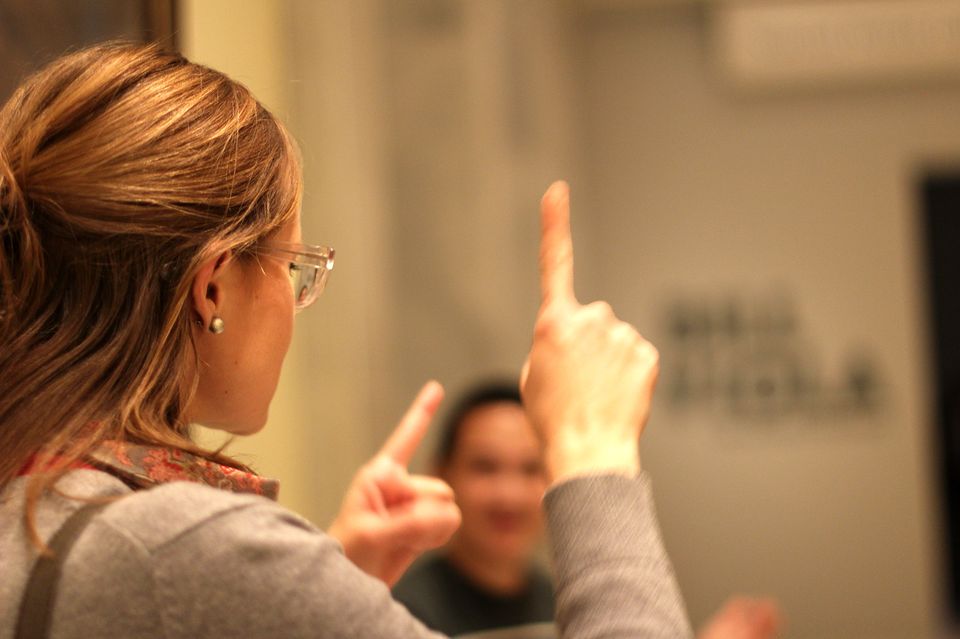
Last month the American Art Museum received a commendation for Art Signs OnLine from the international JODI Awards which recognize innovative uses of digital media to make museums, galleries, libraries, archives, and heritage venues more accessible to disabled people. Susan Nichols, Chief of Education at the Smithsonian American Art Museum, tells us about the genesis of the program.
It's a busy Saturday at the Smithsonian American Art Museum, in Washington, D.C. A knot of a dozen visitors is in animated conversation with their gallery guide. The guide and his cohort are part of two Saturday afternoon Art Signs tours for deaf visitors. Added to the mix is an American Sign Language (ASL) interpreter to voice information and queries, observations and exchanges for hearing staff and visitors. Then Art Signs morphs into a bilingual tour with the rare opportunity for hearing and deaf audiences to learn together under the leadership of a deaf guide.
Nationwide 2 to 4 of every thousand people are functionally deaf. Gallaudet University, the first school for advanced education of deaf and hard of hearing students in the world, is located two miles from our museum. A potential audience of nearly 3,000 plus their friends and families, we had no consistent program of services for this audience, no direct invitation, and no relationship.
An email opened that door. Tabitha Jacques, a graduate of Gallaudet, asked us how deaf students might join our next docent training class. We countered with the suggestion of a smaller, more focused training designed for deaf volunteers to give gallery talks to their deaf peers. Not only would this help us serve more diverse audiences, it would elevate the visibility of this group to our hearing visitors and staff. With Jacques's recruiting help and contacts within the deaf community, we welcomed six Gallaudet students and one professor for our April 2009 launch of Art Signs, during National Deaf Month.
At the start of each public tour, Art Signs gallery guides introduce themselves and welcome visitors to the Museum, remind all of museum etiquette, reveal which artworks will be considered, and lead the group to the first artwork. Visitors are invited to spend a few minutes examining the artwork and share their findings—objective and affective. The gallery guide acts as mediator, deftly connecting comments, adding information, eliciting a second look and more reflective questions through shared consideration of visual images. As with all our programs, a key Art Signs goal is to help visitors gain self-confidence in our museum, in fact, to make them comfortable within all museums.
In January 2010, we nibbled at one more Art Signs iteration. After eight months of in-gallery experience and an accumulated portfolio of 23 presented artworks, we set about to share the in-gallery program with a national audience via our website, to videotape each Art Signs gallery guide and post their presentations online. In honor of Deaf History Month, Art Signs OnLine launched in April 2009. Later that summer that resource was adapted with verbal description to aid blind and low-vision visitors to envision the artwork. Our online repertoire of artworks in ASL and audio formats will grow as Art Signs Gallery Guides expand their catalogue of presentations at both Smithsonian American Art Museum and our Renwick Gallery.
















